INDUSTRY SPOTLIGHT: Pure Audio boss on plans for the blu-ray format
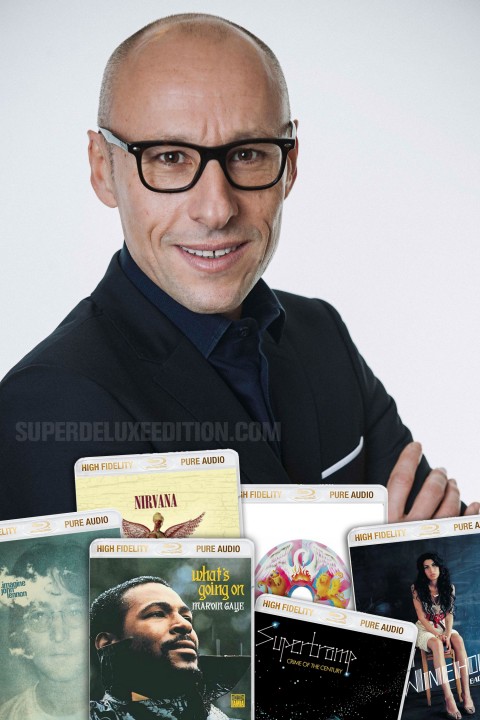
Olivier Robert-Murphy is a Global Head of New Business at Universal Music Group.
He and fellow Frenchman Laurant Villaume have spent the last two years bringing their vision of hi-res audio to market, in the form of audio-only blu-ray discs branded High Fidelity Pure Audio. This year has seen a flurry of releases on the format including albums by The Rolling Stones, Supertramp, The Velvet Underground, Amy Winehouse, Stevie Wonder and Queen. John Lennon’s Imagine has just been announced as a new release for later this month.
We caught up with Olivier at Universal’s offices in West London and put some questions to him about High Fidelity Pure Audio…
SuperDeluxeEdition: What were your aims with this project?
Olivier Robert-Murphy: It all started two years ago with a business friend called Laurent Villaume as we were having dinner. He’s got a very sexy, expensive hi-fi system in his house and he was telling me that his daughter just plugged an mp3 player into it and it sounded shit. He said ‘what are you doing?!’ and he was frustrated by the quality of the sound. I share this frustration with him and cut to the story short at the end of the dinner we had a name – ‘High Fidelity Pure Audio’ – and we had a plan, which was ‘let’s do it – let’s launch something.’
And so it all started from there – defining minimum sound quality of masters… and more importantly, how do we do it? Laurent, being president of the blu-ray association in France, was the best person to know how much blu-ray could help. So we created this format together.
SDE: Did you see this as a business opportunity, or do you personally share Laurent’s passion for high quality audio?
ORM: I’ve been a drummer for 30 years, I like music and like to hear music sounding right, and I have to say when you see what happened with the film industry – you started from black and white tapes, then VHS, then DVD and everything is focusing on the best quality. With the music industry the best format in the beginning was vinyl, and then you went from mini-disc, CD, to MP3 – all about portability and not necessarily about quality. And that’s always been a frustration, a personal one. A business opportunity? Maybe. But at the beginning it was a personal battle against the quality of sound.
SDE: How do you listen to music when you’re at home? Do you listen to vinyl? What’s your preferred method?
ORM: Well I’m going to tell you the truth, being French I’m going to say, it’s not ‘Fromage ou dessert’ – Cheese or Desert. It’s not meat or fish. You can choose whatever you what, and actually what we see is that 35% of vinyl buyers today are 35 years old, or less. It’s not all about the old farts like us [laughs]. So they’re buying this but at the same time they’re consuming unlimited music as MP3s. That’s what it’s all about. And I do the same, I’m the same as those people. I consume in different ways.
SDE: What do you think the challenges are? Your current challenges, and the difficulties when you kicked this initiative off?
ORM: Excellent point, I’m going to mention something now that you will love. Someone called Arthur Schopenhauer said “Every big idea is first ridiculed, then passionately fought against and then accepted as self-evident”. And that’s exactly what I’m facing. So at first it was like “are you kidding? A physical format, in this digital world?!” And then it was “it’s not going to work because of this and that, it’s too expensive, it needs clearance etc.” And now we’re starting on the third phase which is “of course, what a great idea!” So that’s where we are at the moment. The way we did it was we first launched The Rolling Stones on amazon.co.uk [the GRRR! 50th Anniversary hits collection] which as you know was a success and created a buzz, and then we picked a market and under the leadership of Pascal Nègre, whose the French President and senior member of the board at Universal, he said “I love this, let’s do it”. Pascal is very famous in France, so he went to media: news, journalists etc.
SDE: So that sounds crucial, he was a big advocate?
ORM: Exactly. And suddenly there was a spark. We lauched this [in France] in partnership with FNAC [long-established French entertainment retail chain] and we’ve expanded to all markets and have launched 32 new products in addition to the 35 available. We’re spreading around the world.
SDE: How will you measure success? What does success look like for you?
ORM: It’s a good question. It’s about expectation. When I started this with Laurent, we said ‘what’s the target?’ One million units? That would be quite nice to start with, over two years. But the real success is five million. At the moment, we launched 1 June, roughly, and we have sold 400,000 units. I’m absolutely convinced we will reach one million – there’s no question. Now how do you measure the success of the vision? It will still be a niche market, because people will buy deluxe packages and normal CDs etc., but if 25% of physical sales come from this format, then it will be exactly where it should be. When we launched SHM-CD in Japan it represented 25% of new sales. When we launched Mylene Farmer in France, Monkey Me the album sold 500,000 units and 85,000 units of that were Pure Audio.
SDE: Does that mean some terrorities are going to be easier to switch on to this? Are the French, for example, particularly enthusiastic?
ORM: I’m going to say something controversial. It’s about people. It’s about, ‘I believe in this and I’m going after it’. It’s about who owns it at a local level. That’s why I created this industry group with Jim Bottoms. We created the Pure Audio Industry Group because we realised this initiative talks to the music industry, but you also have a lot of independents: Metropolis Studios, Abbey Road, sound specialists, DTS, Dolby, the guys who manage the packaging… it talks to a lot of people. You put all of this together and then it’s about ownership. As a group you go to countries and they say ‘I like this’ Why do you think that Warner France is releasing product now? Because they’ve seen it and they believe in it.
SDE: But why don’t Warner France just go off and do their own thing? Do they see the value in pulling together for something like this?
ORM: It’s about learning from the mistakes of the past. Do you remember the SACD versus DVD-Audio battle? For SACD you had to buy a player and initially it was €1000 or something ridiculous, you had patents you had people protecting it and fighting for it… here it’s about promoting music as it’s intended by the artist. The number one battle for Laurent and me has been [to ensure] no patent. Open it up to people, offer it to everyone. And that’s why people such Warners, and now Sony, are joining us. It’s a common interest.
SDE: When you say ‘no patent’, what you mean is they don’t have to pay you some licensing fee or the like?
ORM: They don’t have to pay anyone. The other reason [why it’s being well-received], going back to the SACD-DVD-Audio point, is the penetration of households that have blu-ray [capability] . It’s massive and it’s growing so fast, for three reasons. The first one is the [take-up of the] standard blu-ray player, the second one is X-box/PS3/PS4 which are blu-ray players and the third one is the TV [set-top] box. They have blu-ray players now, integrated. And that immediately explodes the integration. And the behaviour or the act – we’re not reinventing something. It’s the exact same gesture or behaviour as taking my CD out of the box and putting it in my CD player. With this I’ll take it out of the box but I won’t put it in my CD player, I’ll put it in my blu-ray player. Also not everyone realises that blu-ray players play DVD and CD – so one device for everything.
SDE: So going back to SACD and DVD-Audio, what do you think the mistakes were? Just the fact that they were in competition with each other and people had to spend large amounts of money, and sometimes the SACD wasn’t a hybrid disc, and you couldn’t even play it in a normal CD player…
ORM: You’ve just summarized it. I mean you might love the format, but you need two players an SACD player and a DVD-Audio player – forget about it.
SDE: SACD discs are still being released today, by niche labels like Audio Fidelity in the United States. Do you see that format carrying on, but just remaining very niche?
ORM: I have to be honest, and I’m going to get killed for saying this, but no I don’t see this going on. I do believe with Pure Audio today, it makes a lot more sense. The volumes will be so significant compared to SACD today.
SDE: How do you decide what titles to release?
ORM: There are different factors in deciding what products to release. The first one is ‘do I have the master?’ As a rule, we implemented 24/96 minimum (24 bit / 96 Khz) which is not the case on everything, unfortunately…
SDE: But if you don’t have a 24/96 available you could get a new transfer done?
ORM: Well yes, if you go back to the original, original one…
SDE: That’s good isn’t it? To do that?
ORM: But you have to have access to this and it’s difficult to source. We’re talking about going back 50 years ago in some cases, or 40 or 30 or 20. So [it’s about] where is all this material, how can we source it…
SDE: [exaggerating slightly] But Universal own half the world’s music anyway, don’t they, so…
ORM: I can’t say that. But the point is, it’s not about owning music, it’s about sourcing it and doing it. So first one is purely technical. The second reason is rights. Yes you might have the right to do this, but we’re working with artists. No one works ‘for’ anyone, it’s a joint partnership, so they have to say “yes, I love it, I want to release it.” And it has to fit. Imagine you are between two albums – is it right to release at this time? These are the kind of discussions we have with artists. And the third reason is what the consumer wants. Does he want the new Lady Gaga album in this format, or does he want all the catalogue stuff such as Queen, Elton John, Marvin Gaye, Bob Marley or does he want classical or jazz. Or does he want domestic repertoire. Does he want the new Stromae – I’m talking about a French act here… so there all these factors and there is a fourth one, which I have to be honest, if you’re going to release 200 or 300 albums, it costs a lot of money. It’s the birth of the format. We have roughly at this point in time 100 albums available to release and we’re looking to move to 200 very quickly. It’s a huge investment.
SDE: So does this mean with the original flurry of releases, you’re likely to be risk-averse – sticking with the Bob Marleys, the John Lennons…
ORM: I can’t argue with that. It’s true we’re talking to a fanbase and to a population who likes music, who likes [high quality] audio sound – it’s true, with the first titles, yes.
SDE: So taking John Lennon’s “Imagine” album as an example. What’s the process of getting that out the door? Do you have to go and talk to people like Yoko Ono and have a process of negotiation? Or does someone just look at a spreadsheet and say ‘okay we now own EMI, so we’ll do John Lennon’
ORM: It doesn’t work like that. It’s not me doing it anymore, so that might be a question for other people here, but the way it works is usually we identify a list of preferred titles, then we go to see if technically we have it, and then we go and talk to the artist, explaining what we’re doing. We show them examples of what we’ve released, we make them listen to it, [and ask] “is that okay with you?” then we start production. That’s usually how it works.
SDE: One thing I’ve noticed recently is that some smaller labels are starting to bring out product on Blu-ray audio. For instance there’s an XTC album that’s just come out called ‘Nonsuch’. Andy Partridge from the band has his own label called Ape and he’s licensed the content from whoever owns it. Anyway, he’s put out a CD+Blu-ray audio combo pack…
ORM: A Blu-ray Pure Audio? 24/96 minimum?
SDE: Yes, it’s hi-res – it’s as good as what you’re doing, but on the blu-ray, they’ve got the original version of the album – in hi-res – they’ve got a new Steven Wilson remix, also in hi-res, they’ve got demos, video content, an instrumental version of the album… in other words they’ve got a hell of a lot of content on there. Does that worry you? Is that a threat to you? Because despite the clarity and the great sound, some of your products are eight tracks, or 10 tracks and that’s it.
ORM: It’s a good point. I have a personal belief and I’m going to share it with you, and I’m not the only one who thinks this…. Do I want to do a Blu-ray Video? Because that’s what they’re doing. They’re creating a Blu-ray video…
SDE: Well video is part of it…
ORM: Exactly, that’s my point. It’s different; it’s not the same thing. At the moment the only thing we’re doing… an artist has created an album, in a certain order, in a certain way. All this is creativity, creative musical thinking, and he [the artist] wants to put it in front of the public in that way. And all we’re doing is respecting that 100%. Except it’s in hi-def. It’s as he recorded it in the studio. Second point, it’s actually not the same thing – listening to music and watching music. You normally watch only once. When you listen, you listen many times. It’s a different experience and I don’t think it’s the right strategy at the beginning to include all this content. Because where’s the limit? We’re launching a standardised format. One time it will be a gallery of 100 photos, the next time there will be backstage video content, etc etc.
SDE: The trouble is, the music industry over the last 10 or 15 years has got the consumer used to wanting bonus material. So for instance take Lionel Richie’s “Can’t Slow Down”. That’s already been out as a 2CD deluxe edition. The second disc has unreleased versions of the album tracks, at the end of the first CD there’s some single versions and twelve-inch remixes. And also with the super deluxe box sets, consumers are used to being given an incentive, because if it has come out before I want you to give me something extra.
ORM: The Who ‘Tommy’ deluxe box includes a Pure Audio. So that’s what will happen. You’ll have a deluxe package that will include both.
SDE: But back to Lionel Richie, what’s the issue? Why not just put those extra tracks on the Pure Audio as a bonus?
ORM: I agree, I agree. It’s a good point.
SDE: Well, why didn’t it happen?
ORM: I’ll raise it. It’s possible. It’s an artistic decision as well, but you’re right.
SDE: So you’re not ruling out that [the inclusion of bonus material] could happen in the future?
ORM: No, not at all. And actually, I think it will happen.
SDE: Let’s talk about 5.1 surround sound. As you said, more and more households have blu-ray players sitting under their TV; they might also have a surround set-up with speakers behind the sofa, a subwoofer etc., so they can enjoy Lord Of The Rings and the like, but it’s only a small minority of titles that you have released so far that have included a 5.1 mix. Looking online, it seems to be the most desired thing, particularly from audiophiles who may have some SACDs sitting on their shelf or have enjoyed DVD-Audios in 5.1 in the past. Are you going to start releasing more titles with 5.1?
ORM: Two things about this. Number one, you have your personal belief when you launch something. You do your best to test, what does the market want? So I had to follow my belief, and my belief is that when I’m listening to an orchestra, and don’t like to hear the trumpets behind my right ear. I like to be in a theatre with everything in front of me listening to a performance. That’s what Pure Audio was about. What I found out, is the same as you. I got a lot of feedback from consumers saying ‘actually, you know what, we want 5.1’. So we started to release Queen and others. We have more product coming in 5.1. We’ve actually launched a dedicated plan for the next six months to have a lot of 5.1 releases – as a pure dedicated initiative. I have to be honest and say that I was surprised how much people wanted that. I thought all these music lovers will want it exactly as it was originally recorded, but no, they want it like that.
SDE: Ultimately you can give people the choice can’t you. If you don’t want 5.1, just listen to the stereo version.
ORM: Yes, but we have costs to consider and sourcing – we don’t have 5.1 available everywhere.
Before asking the next question I handed Olivier Robert-Murphy the mastering details from the new Japanese mini-LP CD reissue of the Rolling Stones’ ‘Sticky Fingers’ which has lots of information about when the transfer was made and who made it (see image below)
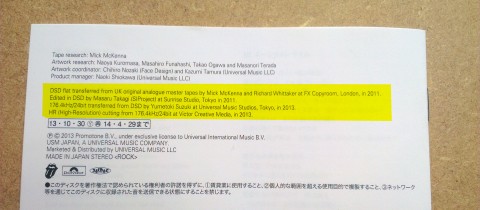
SDE: One of the criticisms I’ve seen on your Facebook page, is that people consider that they are having to buy your products ‘blind’ because there is no information about mastering. However great the original recording is, an engineer can remaster it and change the sound for the worse. A good example is Nirvana’s “Nevermind”. That is not considered to be an audiophile remastering; the 2011 version is widely criticised as being compressed and ‘brickwalled’ [ie lack of dynamic range]. So putting it on a blu-ray audio when you have ‘no compression and no compromise’ as your tag line doesn’t make sense. People might say, why haven’t you gone back and created a new audiophile remastering, since this is supposed to be a product where the quality of music is paramount.
ORM: I’ll have to speak to people in charge of this and understand it better. But you and me and these other people you mention, what we have in common is that we’re quite geeky. [Gesturing towards the Rolling Stones Japanese mastering details] If I see that at the back of a package it could influence me, in terms of buying it, that’s for sure. I’m not sure this is something for the mass market. But does it hurt, to put it? Probably not. Should we put it? Let’s see. It’s more a discussion I should have with the industry group as well. We’re not just talking about Universal here – it’s as an industry should it be recommended or compulsory to put or the sourcing details. In a way, it would legitimate the initiative, it would make it more transparent.
SDE: I think so. The other thing is the early adopters for this kind of product are likely to be the ‘geeks’…
ORM: I meant ‘geeks’ in a positive way!
SDE: Yes, I know. But would you consider putting more information about mastering on the packaging?
ORM: Yes, I’m going to raise it at the next Pure Audio Industry Group. We’re meeting soon [Olivier gets someone to photocopy the mastering details from the Japanese booklet].
SDE: Over the years mastering has had it’s ups and downs in terms of the quality of what is produced, but to me it seems like you just take the latest remaster and use that. I wonder how much time is spent investigating what is the most appropriate remaster to use? That Nirvana remastering might sound great on CD blasting away in your car, but is that an appropriate mastering to use for Pure Audio?
ORM: Interesting. Interesting comment.
SDE: Final question, do you think anyone at Universal sees the Pure Audio product as a threat to the Super Deluxe box set? If you put too much content on them, people won’t buy the £80 box set, they’ll just buy the £15 Pure Audio disc.
ORM: I don’t see it as a threat and I’ll tell you why. Who is buying the deluxe package? There is a lot of gifting. And we are not in the same price category. Let’s say an album costs €10 today, a Pure Audio will cost €12 or €13. A deluxe package might cost €30. It’s not the same. It’s about being logical about who you’re talking to and what you’re offering.
Olivier Robert-Murphy was talking to Paul Sinclair for SuperDeluxeEdition.
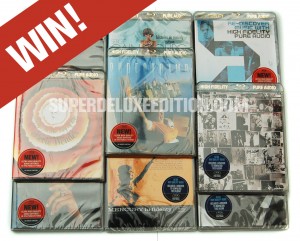 WIN a massive bundle of High Fidelity Pure Audio releases by entering our free and exclusive competition!
WIN a massive bundle of High Fidelity Pure Audio releases by entering our free and exclusive competition!

 Interview
Interview
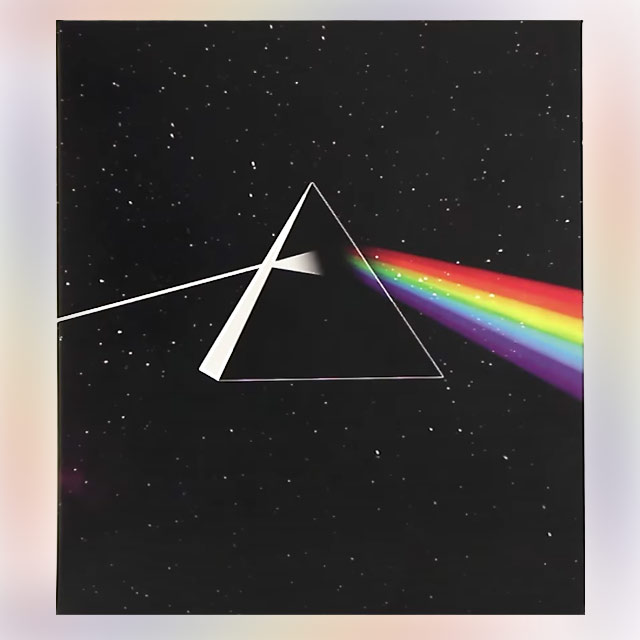
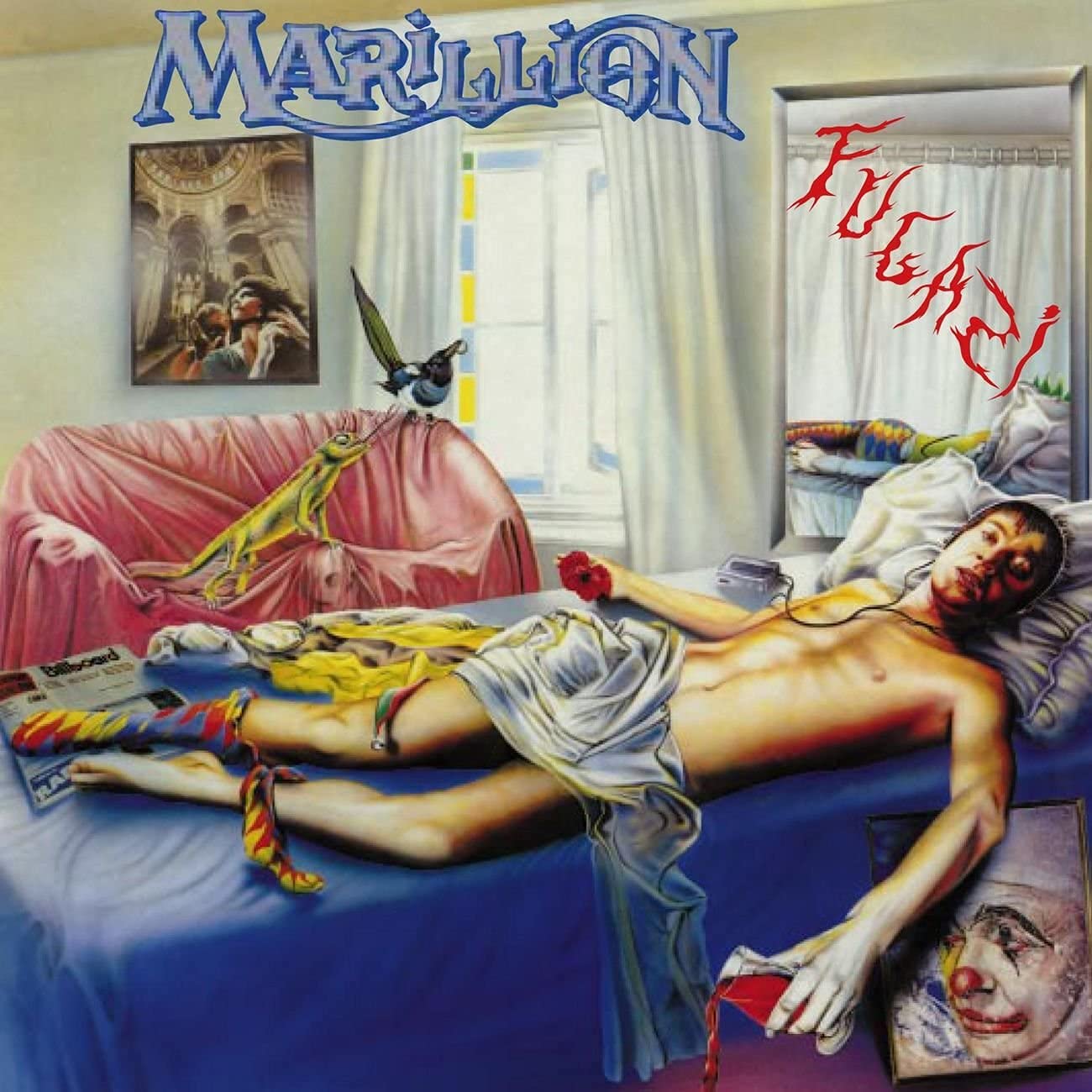

By Paul Sinclair
67